Rockwell B-1 Lancer Strategic Bomber (3 part)
The aircraft of the normal balancing scheme, has an integral aerodynamic layout, characterized by smooth conjugation of the fuselage and a low-position variable sweep wing, and is equipped with four engines arranged in pairs in the nacelles under the fixed part of the wing (LFO). Integral layout provides an increase in internal volumes, a decrease in the area of the washed surface and the EPR of the aircraft. The design is safely damaged, the estimated life of the 13500 airframe h. For the first time during a major American aircraft-building program, strength requirements were drawn up taking into account fracture mechanics. When describing the permissible operating conditions of the B-1, it was stated that, having a flight mass of 170 t, the aircraft could perform maneuvers with an overload of 2,5 units. The maximum permissible velocity head is 6500 kgf / m 2, which, when flying on the ground, corresponds to the number M = 0,96.
Initially it was supposed to perform the design on 40% (by weight) of titanium alloys, but subsequently their share was reduced to 21%, and then to 17,6% due to a decrease in the maximum number of M flight. In the compounds of the fourth part of all parts made of titanium diffusion welding is used. B-1B also uses aluminum alloys (42,5% content), steel (7%), KM (2,3%), fiberglass and other non-metal materials (30,6%). On В-1 В the design is changed to 20% in comparison with В-1А, in particular, the chassis is reinforced, RPM, etc. are applied.
The box-shaped transverse beam of the center section is longer than 7,9 m and 1,5 m wide, bearing the hinges of the rotation of the moving parts (ПЧК) of the wing and receiving loads from the main landing gear, is made mainly (almost 80%) of titanium alloy Ti-6AL-4V using diffusion welding, sealed and contains an integrated fuel tank. Using the same titanium alloy, a mechanism for changing the wing sweep is made (in particular, lugs of double milled plates with solid reinforcement and axes of hinges of rotation of the wing moving consoles having a diameter of 430 mm, weight of approximately 270 kg and based on steel ball bearings). PCP screw drives, developing forces up to 4410 kN (450 tf), are connected by a synchronized shaft of rotation of the wing consoles and are driven by four hydraulic motors that can be operated from any two of the four hydraulic systems. The sweep change actuators are closed by protruding protruding root fairings of the FChK, which prevent the formation of cracks with increasing sweep of the movable cantilevers. The lining of the TCC behind the hinges serves as a lick, providing a smooth mating of the wing tail and engine nacelles. Movable consoles have two-spar aluminum caissons with milled spars and ribs, as well as solid-milled monolithic lower and upper casing panels, made of 2219 and 2124 alloys, respectively. The thickness of the skin varies from mm 48,3 to mm 7,6. The movable console has a length of 16,76 m, maximum chord 2,29 m, weight of a fully equipped console 6954 kg. On the B-1A in the joint zone of the tail section of the PSC and LFC, a seal in the form of metal plates was used, on the B-1В sliding plates with inflatable seals of the type developed for the Tornado aircraft were used. The wing tips, the side joints of the wing with the fuselage, and some of the FChK panels are made of fiberglass.
The minimum sweep angle of the FCC on the leading edge of 15 is hail, the maximum angle is 67,5 °. During take-off, the wing sweep angle is equal to 15 °, in flight with a subsonic cruising speed — 25 °, with supersonic speed — 65 °, in flight at low altitudes before being dropped weapons - 50-55 °.
The mechanization of each PCh includes seven-section slats located on the entire span of the console, deviating during takeoff and landing at an angle of 20 ° at a speed of 2 ° / s, six-section single-slot flaps with a maximum deviation angle of 40 ° at the same speed of deviation (two internal sections are locked in the retracted position at the angle of the sweep of the FCC more than 20 °), as well as four-section interceptors (70 °) in front of the outer sections of the flaps, used for transverse control of the aircraft along with the differential stabilizer m (outer sections are automatically locked when M> 1) and as air brakes.
The semi-monocoque fuselage consists of five main sections and is made mainly of aluminum alloys 2025 and 7075 with often spaced (step about 250 mm) frames. In heavily loaded and high-temperature zones (engine nacelles, firebreak walls, tail mount attachments, skin of the rear fuselage, etc.), titanium alloys are used. The steel and titanium spars of the rear fuselage length of 8 and 14 m are reinforced with epoxy boroplastic. B-1A had a gargrot made of epoxy boroplastic, the B-1B had a gargrot removed. Radome radome in the nose - from polyamide quartz, dielectric panels - from reinforced glass-plastic. The front and rear partitions located behind the radiotransparent fairings have a downward slope to reduce the reflection of radar waves. On the sides of the front part of the fuselage, under the cockpit, there are two turning points (range of deviation angles from + 20 to -20 °, deflection speed up to 200 ° / s) aerodynamic surfaces (on aluminum alloy B-1А, on epoxy paneling carbon fiber, aluminum honeycomb and titanium toe and tail) with a negative transverse angle V equal to 1 °, which are the executive bodies of the elastic vibration damping system of the SMCS (Structural Mode Control System) structure in the plane of pitch when flying in a turbulent atmosphere sphere.
The crew consists of four people: the commander and the second pilot are located on the adjacent seats, the defensive and offensive avionics operators are behind the pilots, face down in the direction of flight, also on the seats next to them. On the first three B-1A prototype aircraft, the cockpit was detachable and was a rescue capsule developed on the basis of the F-111 aircraft capsule and allowing the aircraft to leave in flight and in conditions close to zero speed and flight altitude, on the fourth B-1A and all The B-1B is equipped with Weber's ACES II ejection seats, which ensure that the aircraft leaves the aircraft in the parking lot and in flight at vehicle speeds of up to 1100 km / h.
There are places for two instructors (without ejection seats). At B-1B, to protect the crew from the light effects of a nuclear explosion, opaque panels were installed, six of which have 140 mm security windows made of PLZT material with variable optical properties (transparent under normal conditions, the material becomes opaque when passing electric current), reducing light intensity to the level of 0,003% from the original value. Air conditioning and pressurization systems are used with air drawn from the engines (overpressure in the cabin corresponds to the height 2440 m above sea level). A number of aircraft installed onboard oxygen generation system with the molecular sieve of the company Normaler Garrett. The windshield is designed to withstand impact in a collision with a bird weighing 1,8 kg at a speed of 1112 km / h. There is an electric POS and a windshield defogging system. On the B-1B, the windshield has a metallized coating to scatter the incident electromagnetic waves. The entrance to the cabin is through the lower hatch behind the nose of the chassis using a ladder with electric cleaning. The cabin has a toilet and a cupboard.
The tail fin includes a keel with a three-section rudder (maximum deviation angle from + 25 to -25 °) and a middle-set all-rotary differential stabilizer with span 13,67 m (+ 10 °, -25 ° with tangage control, from + 20 to -XNXXX management of the bank together with the spoilers). The lower section of the rudder is the executive body of the SCMS system for damping the elastic vibrations of the fuselage in the yaw plane. The design of the keel and the stabilizer is caisson, on B-20А - from aluminum alloys, on B-1В - with titanium welded spars with sinusoidal wall. Each stabilizer console is deflected by two tandem power boosters.
Three-axle chassis with steering ranging from + 76 to -76 ° (360 ° when taxiing is not on its own trap) retractable forward two-wheeled nose strut and retractable into the fuselage main struts with four-wheeled carts. Cleaning and chassis release are done in 12 s. The removed main wheels are arranged vertically in the fuselage. Pneumatics of the main wheels with dimensions 1168x40 - 6640 mm, 30-pstech with pressure 1,52-1,90 MPa (15,5-19,3 kgf / cm2), the front wheels - 889x292-406 mm, 22-with xX-NXXXXXXX-NNXX with NXXXXXXMXXX1,45-14,8-MPH There are oil-neumatic shock absorbers, carbon disc brakes, automatic braking. Chassis track 2 m, base 4,42 m.
Power point. The B-1A prototypes were equipped with four General Electric F101-GE-100 engines with forced / unforced 133,4 / 66,7 kN (13610 / 6800 kgf) thrusters, which accumulated around 7600 h in flight. The B-1B is equipped with F101-GE-102 modification engines. The location of the engines near the CM of the aircraft increases its stability during low-altitude flight in turbulent conditions. F-101 is a two-shaft low-smoke TRDTsF modular design with a degree of bypass around 2, air consumption 160 kg / s, increase pressure 26,5 has a two-stage fan with an adjustable VNA, a nine-stage compressor with adjustable guide vanes of the first three stages, a two-stage low pressure turbine and one stage with a low-pressure single stage turbine and one stage with a two-stage low pressure turbine and one stage with a low-pressure stage and a one-stage compressor with a low-pressure turbine and a single-stage compressor with adjustable guide vanes of the first three stages, a two-stage low-pressure turbine, and a single-stage compressor with adjustable guide vanes of the first three stages, a two-stage low pressure turbine and one stage compressor with adjustable guide vanes, a two-stage low-pressure turbine and one low-speed fan with adjustable low-pressure turbine a high pressure, a short annular combustion chamber, an afterburner chamber with mixing flows and an adjustable tapering-expanding nozzle. The required overhaul life of the version F101-GE-102 is 3000 h, the engine is optimized for operation when flying with M = 0,8 at low altitude. Engine length 4,60 m, diameter 1,40 m, dry weight 1996 kg (for the modification of GE-100 - 1814 kg). For autonomous engine start, two onboard APUs with a power of 294 kW (400 hp) are used, which also provide the drive for the emergency electric generator.
B-1A air intakes are adjustable. Initially, it was assumed the use of mixed compression air intakes, in 1972, it was decided to use external compression air intakes with a decrease of about two times the number of moving elements and a weight saving of about 635 kg with a slight improvement in subsonic characteristics and a decrease in the maximum M number at high altitude from 2,2 to 1,6. The B-1B has unregulated air intakes with stabilized jumps, as well as with curved channels and with partitions shielding the fans to reduce the plane's EPR.
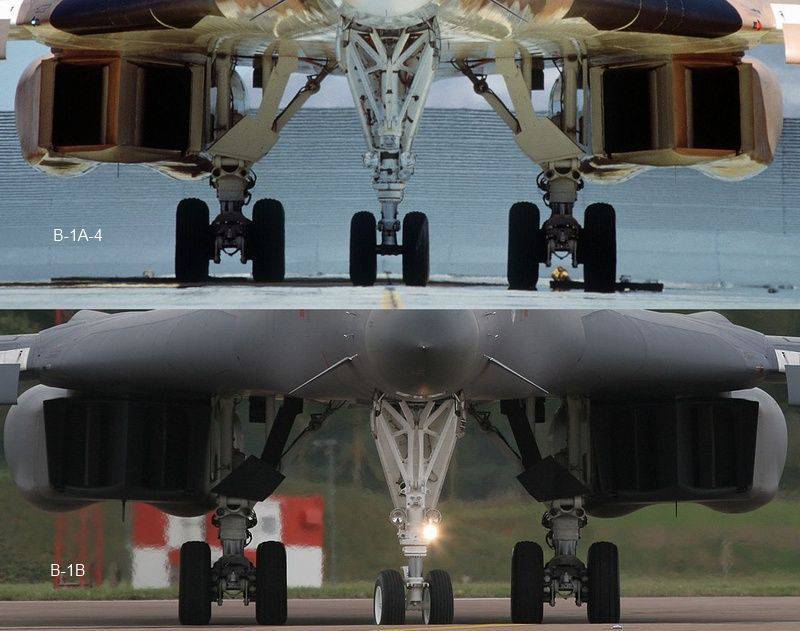
Unregulated air intakes on B-1 B
The internal stock of fuel is located in eight fuselage compartments and an ATC. It is possible to install an additional tank with a reserve of fuel 8165 kg in the dual (front and middle) compartment of weapons and outboard tanks under the fuselage. There is an automatic fuel transfer system used to control the centering of the aircraft with an accuracy of 0,25% SAX, depending on the sweep angle of the flight frequency tool, the position of the flaps and landing gear, the number M, flight height, pitch angle, speed of heel and fuel stock in each tank; manual centering is also provided. For pressurization of tanks a neutral gas system with nitrogen is used. On top of the nose of the fuselage in front of the cockpit is installed a receiver of the in-flight refueling system from the KS-10 and KS-135 tankers.
Aircraft systems. All onboard systems have increased reliability, while maintaining operability in case of failure or providing fail-safe. The irreversible booster flight control system with a four-channel redundancy scheme provides flight in the following terrain mode. Includes air parameters calculator, gyro-stabilizing unit, stability improvement and controllability system SCAS (Stability Control Augmentation System), which on B-1В includes Stall Inhibitor System subsystems (starting from the tenth aircraft) and increasing stability of SEF (Stability Enhancement Function) (starting with the 19 th aircraft), as well as the SMCS system. The main control wiring is rigid mechanical; electric wiring is used as a backup in the rudder and stabilizer channels, as well as for the main control of two sections of interceptors on each half-wing. Autopilot AFCS (Automatic Flight Control System) provides stabilization of roll angle, flight path inclination angle, airspeed, thrust and M numbers. On B-1В, the control system uses gear ratios with non-linear laws of change. Instead of the steering wheels, which are typical for heavy aircraft, there are aircraft control knobs that facilitate the ejection of pilots and improve aircraft controllability.
A hydraulic system consisting of four simultaneously operating independent systems with a working pressure of 27,6 MPa (280 kgf / cm 2) and a maximum flow of 238,5 l / m in each system is used to drive the movable wing consoles, all control surfaces and mechanize the wing, chassis and wings weapons compartment. With one failure, the aircraft can perform the task, with two - to make a safe landing. Hydraulic pipelines are made of Ti-3A1-2,5V alloy. No pneumatic system.
The three-phase alternating current power supply system (230 / 400 B, 400 Hz) is powered by three generators with a power of 115 kV A, having constant speed drives from the engines and connected to four main buses. The EMUX (Electrical Multiplex System) electrical multiplex system with self-control, including a mini-computer and two two-core cables, provides power management for consumers, data exchange between avionics systems using four trunks that comply with the standard MIL-STD-1553B, and control signals of the main systems.
TARGET EQUIPMENT consists of offensive (CCW) and defensive (CCW) electronic equipment complexes. KNO developed by Boeing, consists of 1 quick-detachable blocks on a V-66B with a total weight of 1308 kg with a power consumption of up to 20 kW and includes the Westinghouse AN / APQ-164 multifunctional pulse-Doppler radar (instead of the General Electric front-view radar AN / APQ-144 and Texas Instrument Landing Radar Instrument AN / APQ-146 on B-1 A), DISS Teledine Ryan AN / APN-218, ANN Singer Kirkpt SKN-2440, avionics control units. APQ-164 radar developed on the basis of the radar AN / APG-66 F-16 aircraft, is the first American aviation an on-board radar equipped with a headlamp with electronic scanning includes a TWT transmitter, operates in the X frequency range and has air-ground modes (mapping with aperture synthesis, real-beam mapping, automatic following the terrain at a height of up to 60 m, manual bypass of ground obstacles, ANN speed correction, detection and tracking of ground moving targets, measurement of high flight altitudes and work with a ground beacon) and air-to-air (weather reconnaissance, work with an aerial beacon and meeting with a refueling aircraft). Weight radar 570 kg. The antenna has dimensions 1118x559 mm, it is usually located 30 ° downward to reduce radar reflection in the front hemisphere, can deviate into three fixed positions (to provide side viewing) and has viewing sectors for electronic scanning from +60 to -60 ° in azimuth and corner of the place.
On the B-1B, it is planned to use the low-altitude sighting-navigation system LANTERN.
The basis of CCW, developed by Eaton, is an EW AN / ALQ-161 system consisting of 108 quick-detachable units with a total weight of about 2360 kg (without cables, indicators and controls), power consumption up to 120 kW and including radio engineering intelligence equipment, warning system attack from the back hemisphere of the company Eaton (first used Westinghouse AN / ALQ-153 pulse-Doppler radar), means for creating noise and imitation interference to various radio-electronic means (ground-to-air missile radar, air defense radar, control radar by launching air-to-air missiles, early warning radars and radars of intercepting air targets during targeting from the ground) and a central computer that must recognize irradiating radars, assess the threat they pose and assign priorities to their suppression. ”The ALQ-161 system operates in the frequency band from less than 200 MHz to 40 GHz (in the original version in the band of approximately 0,5 - 10 GHz). Interference in the high-frequency part of the range is created by using three LIGHTS (one in the nose of each LFC and one in the tail section of the fuselage) with electronic scanning of each 120 ° sector in azimuth (to provide a circular coverage) and 90 ° in elevation. Low-frequency signals are emitted using quadrant horn antennas installed near high-frequency ones. According to the B-1 aircraft test program, the ALQ-161 system worked more than 400 hours on 95 flights. The price of one ALQ-161 system is about 20 million dollars (including all costs for its development and production). There is a large number of Northrop active interference transmitters and disposable EW equipment (dipole reflectors and IR false targets).
In the middle of 1986, the attack warning system from the tail revealed serious shortcomings and the first 22 of the В-1В aircraft was not initially equipped with it, and other shortcomings were found. By the fall of 1992, as noted above, the EN system was still not installed on 13 aircraft, and on bombers equipped with an EW complex, the radar warning system was not fully operational.
In the workplaces of the first and second pilots, one indicator is installed on a CRT and the usual mechanical indicators, ILS is not available. The display system of the offensive and defensive systems includes three indicators on a CRT, of which two are graphical, providing information about the enemy, and alphanumeric each. Installed weapon control subsystem. The installation of standard communication equipment, identification of state accessories, instrumental landing system, and radio altimeters of Honeywell AN / APN-224 is also envisaged. The total mass of the avionics of aircraft В-1В exceeds 4 t.
There is an integrated CITS (Central Integrated Test System) monitoring system, which records in flight 19600 parameters characterizing the operation of avionics, flight control systems and engines for subsequent troubleshooting and repair.
On-board computing equipment includes eight IBM AP-16F 101-bit computers with 1 million operating speeds / s capable of working with an MIL-STD-1750A compliant architecture: six computers in the CCN system, one in the CITS system and one in CCW. Used software in the language of "Jovial" J3B.
ARMAMENT. The B-1A had three identical (in size and design) fuselage arms compartments of 4,57 m length and four pylons under the fuselage and was designed to carry up to 32 UR AGM-69 SRAM (eight on rotating launchers in each compartment and two on each outer pylon), as well as free-fall nuclear and conventional bombs; in the middle of 1970's it became possible to use the KR AGM-86A (ALCM-A).
On the B-1B, the front and middle weapons bays are combined into one dual compartment of length 9,53 m with a reversible partition installed since the ninth aircraft; the rear compartment remained unchanged, there are six sub-fuselage suspension units. When designing the B-1B, the following nuclear weapons were assumed to be placed on the drum launchers: eight AGM-86B cruise missiles (ALCM-B) with a total mass of 11610 kg in the dual compartment or 24 UR AGM-69 SRAM (16 UR in the dual compartment and eight in the rear) total weight 24385 kg, or 12 bombs B-28 (11810 kg), or 24 bombs B-61 (7630 kg), or 24 bombs B-83 (26135 kg). On the ventral pylons, it was planned to install up to 12 KR AGM-86B, or up to 12 UR AGM-69 or suspension of nuclear and conventional bombs. In the weapon compartments and on the outer pylons, the installation of improved KR General Dynamics EMM-129 was also planned. However, by the beginning of 1990's, SRAM missiles were decommissioned due to the expiration of their storage periods, cruise missiles are not yet installed and nuclear weapons are actually limited to B-61 and B-83 bombs. Moreover, the external suspension is also not used.
Conventional weapons in the internal compartments of the project may include up to 84 bombs Mk.82 caliber 227 kg with a total mass of 20235 kg or up to 24 bombs Mk.84 (total mass 21445 kg), or up to 84 min Mk.36 caliber 227 kg (21910 kg) . Suspension of conventional bombs and provided for ventral pylons. According to some publications, typical combat load from conventional weapons may in the future reach 128 bombs Mk.82 (84 in the fuselage and 44 on external pylons) with a total weight of 30835 kg. However, by 1993, the use of conventional weapons with B-1B was not fully worked out (it was only in July that 1991 experienced B-1 B was certified to drop conventional bombs McNUMX, in 82-1992 it was planned to ensure that bombs McNNXX could be dropped, and guided bombs) and conventional weapons with B-1993 B were not yet assigned. In the future, the anti-ship missiles AGM-84 "Harpoon", precision-guided JDAM and JSOW adjustable bombs and other weapons can be added to the armament of the aircraft.
The arms of the weapons compartment on В-1А are metallic, on В-1В - from composites. On B-1B, retractable spoilers are used to reduce acoustic loads when the weapon compartment is open.
B-1 B flight range with different load
| Weight of combat load, t | Take-off weight, t | Fuel reserve, t | Range (km) without refueling in flight along the profile | ||
| high altitude | big -least {on the site 1850 km) -large height | big - big - big height at the optimum mode | |||
| 16,9 | 201,8 | 97,3 *) | 10200 | 7400 | 8670 |
| - »- | 192,7 | 89,2 | 9400 | 6620 | 8300 |
| 10,9 | 195,8 | 97,3 *) | 10400 | 7800 | 8780 |
| - »- | 186,7 | 89,2 | 9600 | 6990 | 8450 |
*) With an additional fuel tank in the double compartment.
B-1 B Characteristics
dimensions. Wingspan in the position of the minimum / maximum sweep 41,67 / 23,84 m; length of the aircraft 44,81 m (B-1A - 46 m); 10,62 aircraft height m; wing area along the base trapezoid with minimal sweep 181,16 and 2.
Engines. TRDDF General Electric F101-GE-102 (4x136,9 kN, 4x13960 kgf with FK; 4x64,9 kN, 4X6620 kgf without FK). TRDDF General Electric F1-GE-101 (100x4 kN, 133,4x4 kgf with fk; 13600x4 kN, 75,6X4 kgf without fk) were installed on В-7700А.
Weights, kg: maximum take-off weight of 216365 (В-1А near 180000); curb weight of the 87090 aircraft (in B-1, the mass of the empty 73000); maximum fuel capacity in the internal 88450 tanks (B-1A - 86000); Maximum design weight of the combat load: at the nodes of the internal compartments of the 34020, at the external nodes of the 26760.
flight data. The maximum flight speed at high altitude 1328 km / h (M = 1,25) (for B-1А - 2300 km / h, which corresponds to the number M = 2,2); maximum speed when overcoming air defense in flight at 1160 km / h (M = 0,95); practical ceiling 15240 m; maximum flight range without refueling in the air 12000 km.
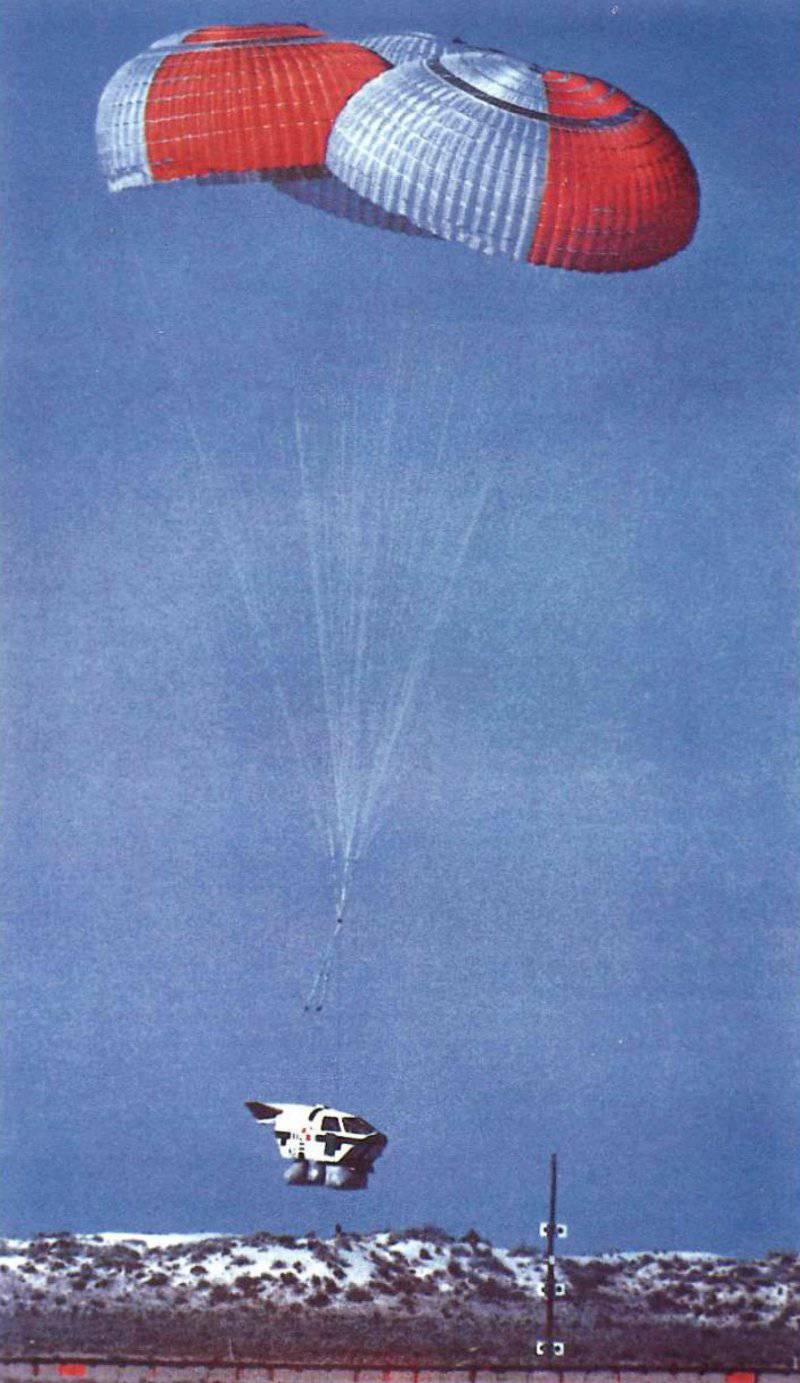
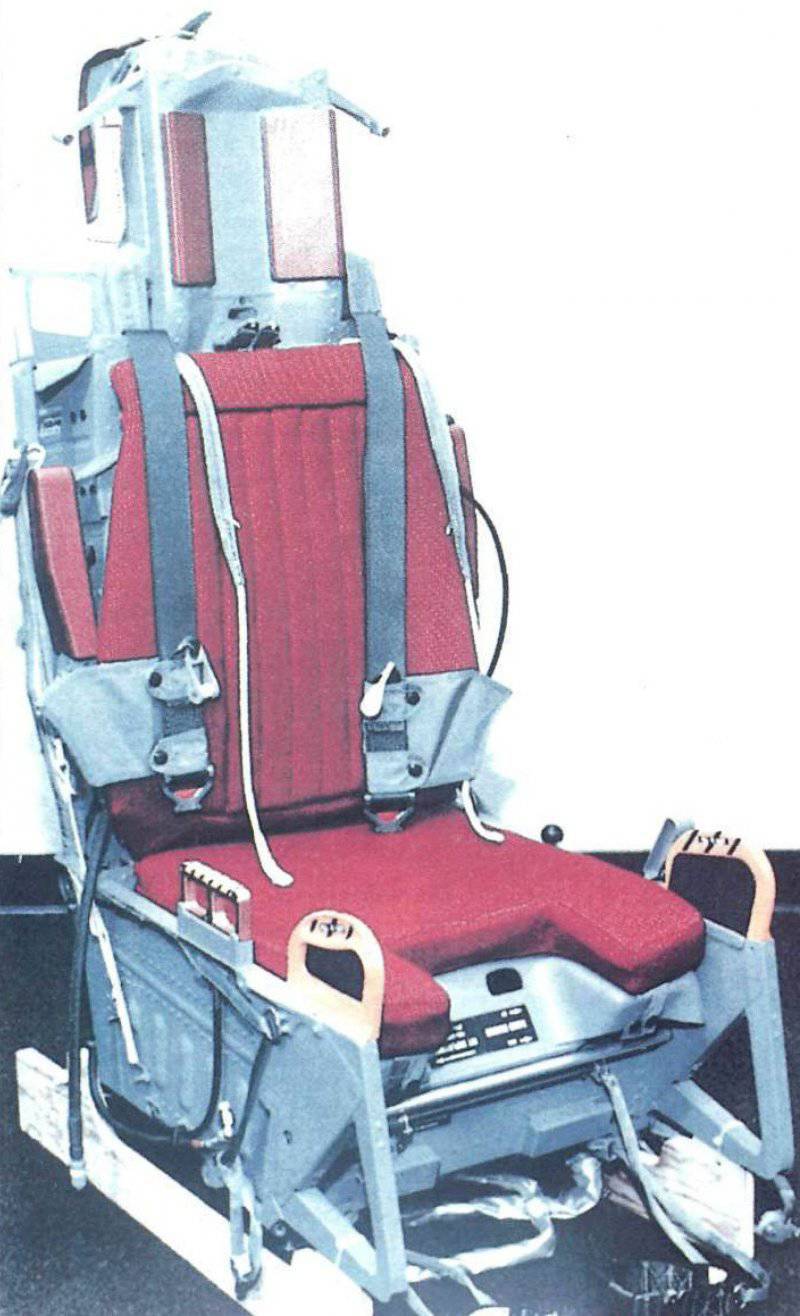
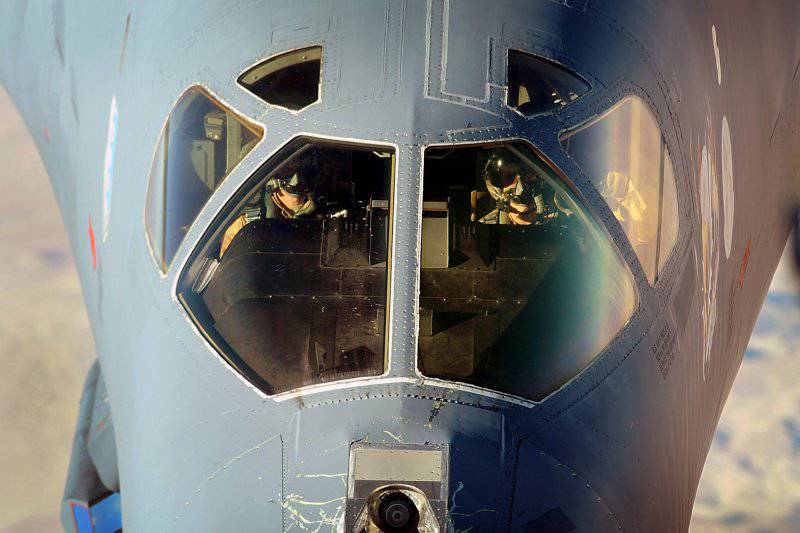
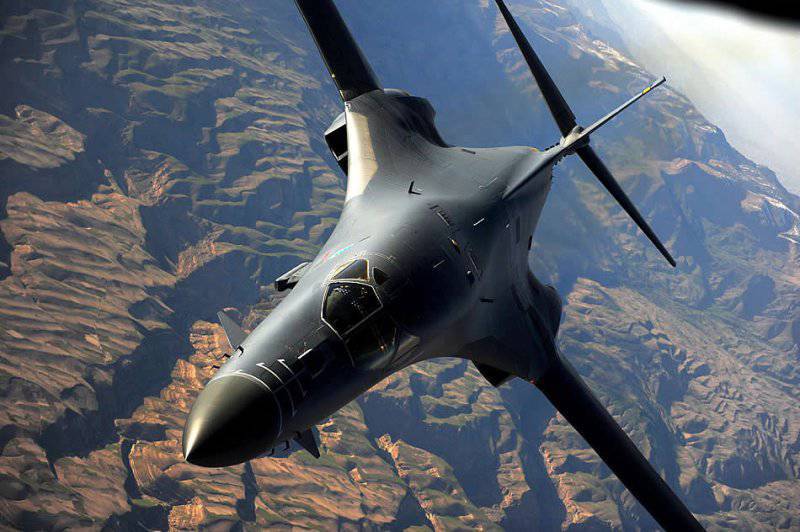
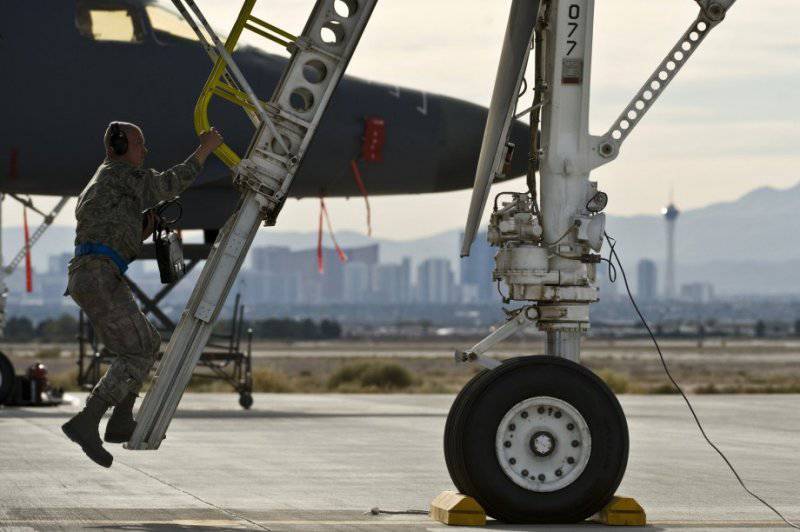
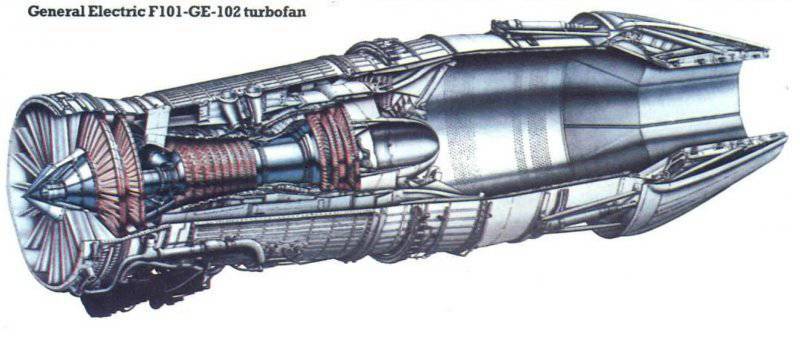
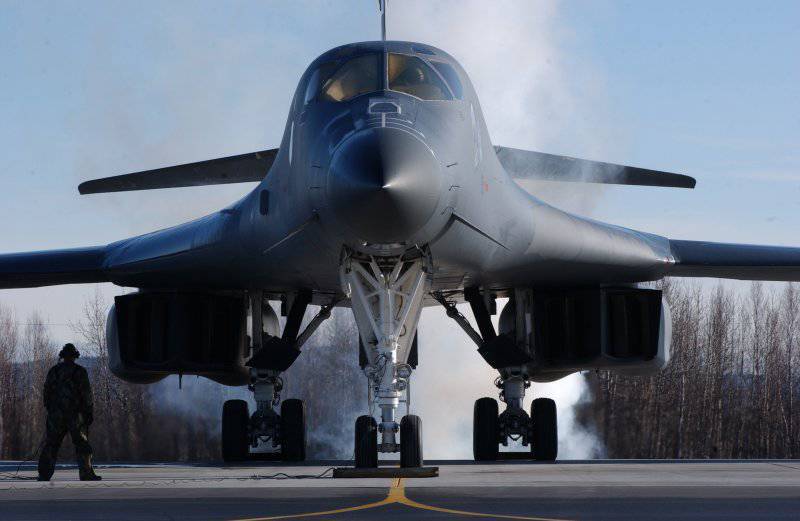
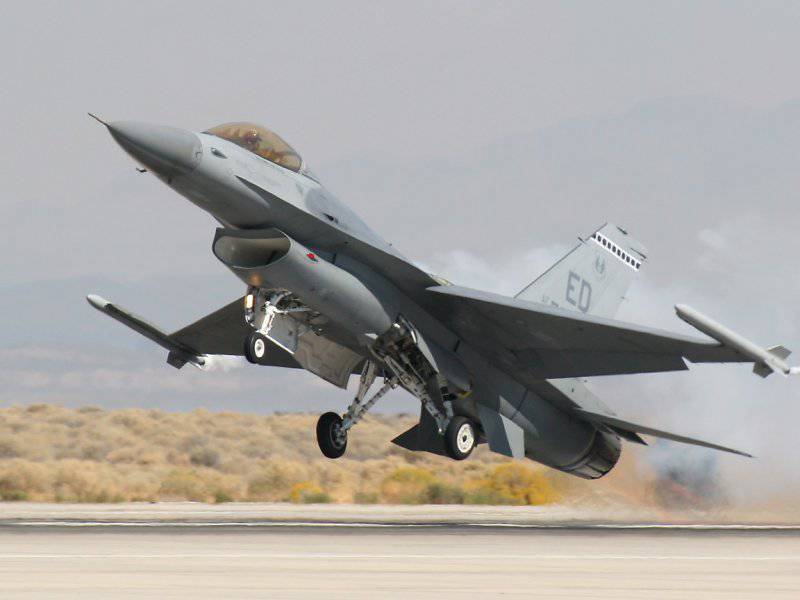
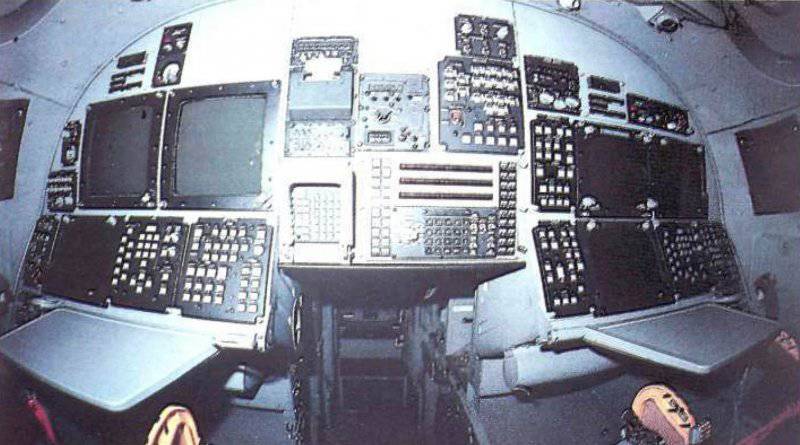
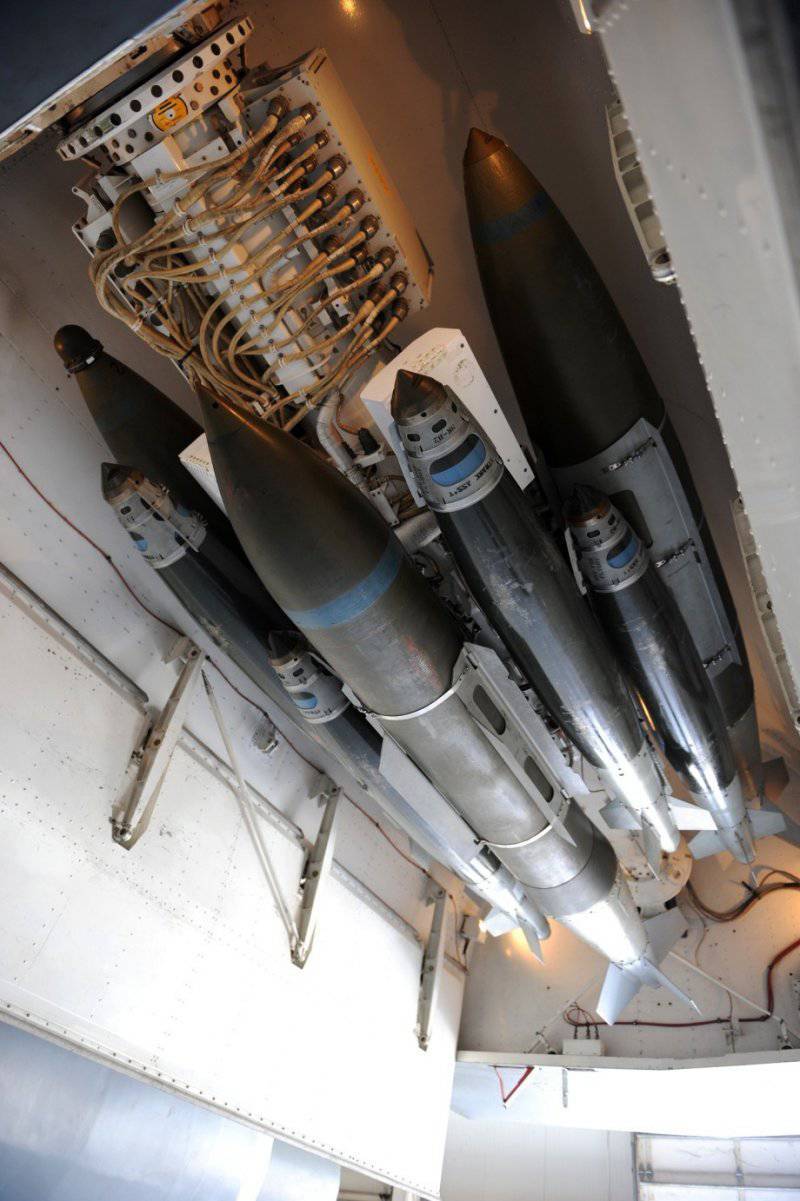
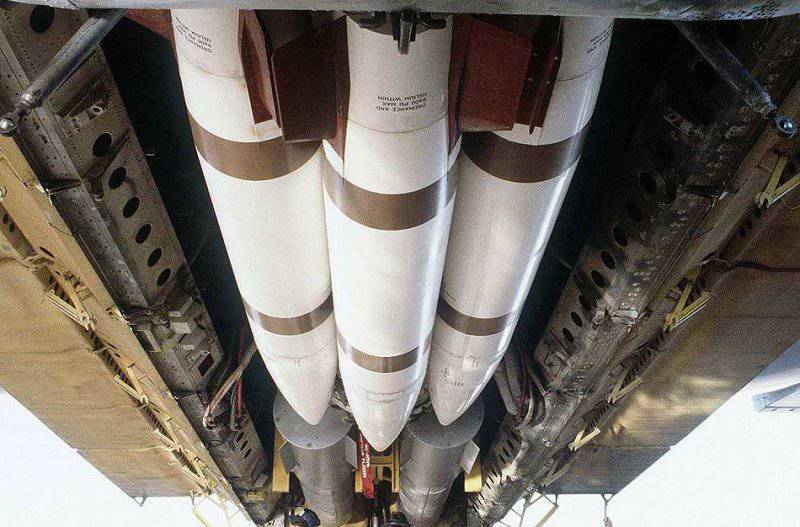
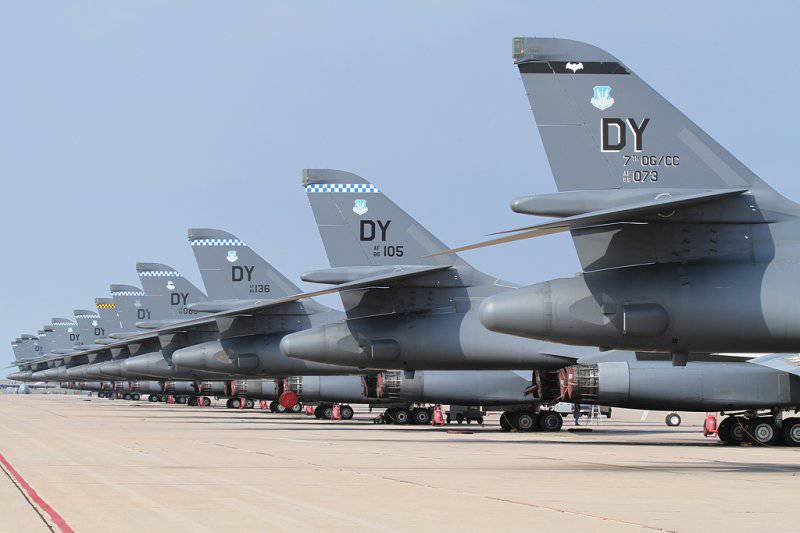
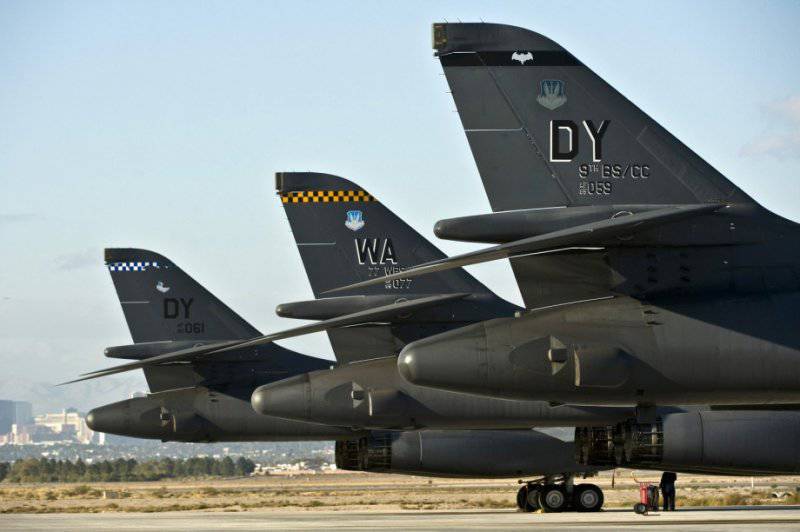
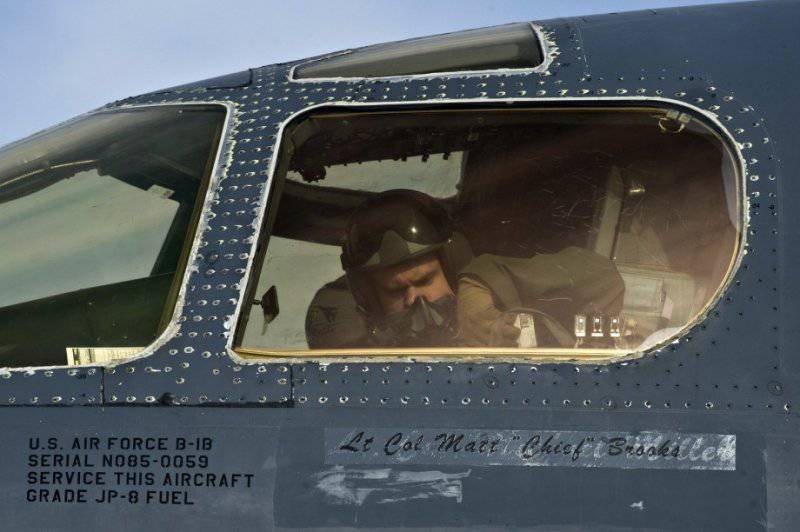
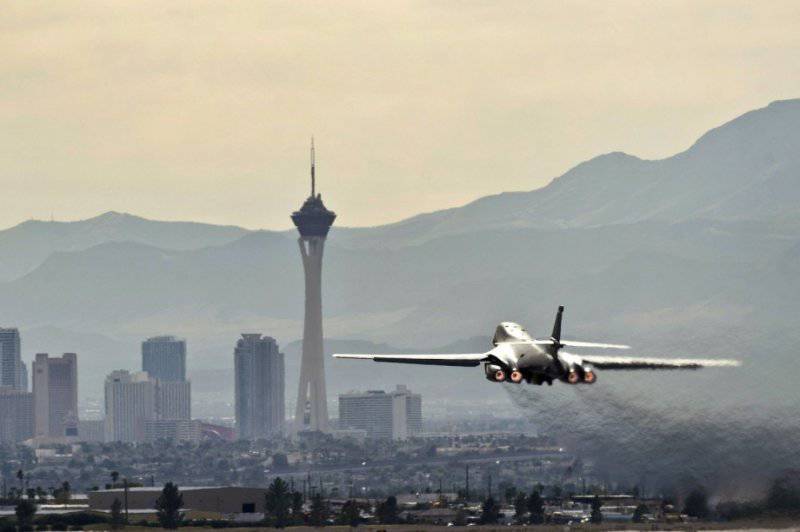
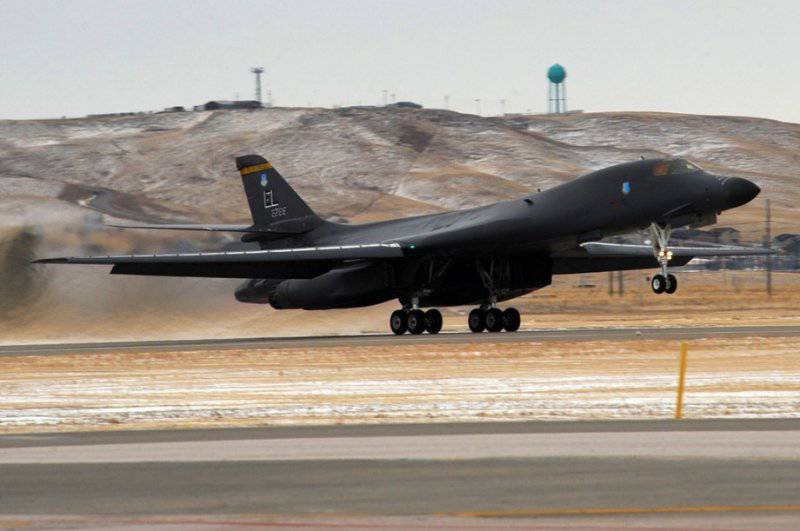
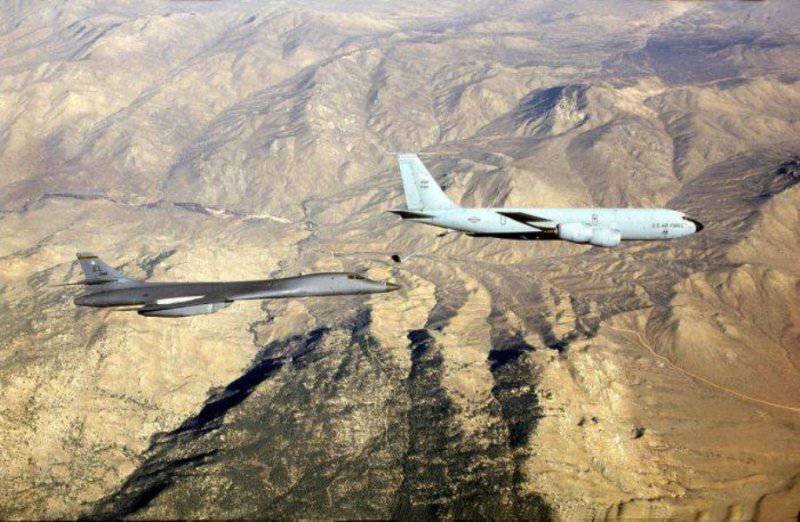
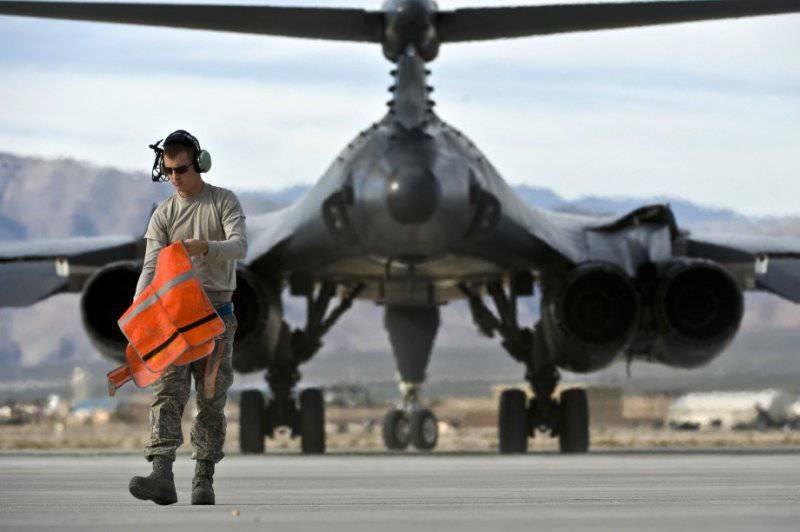
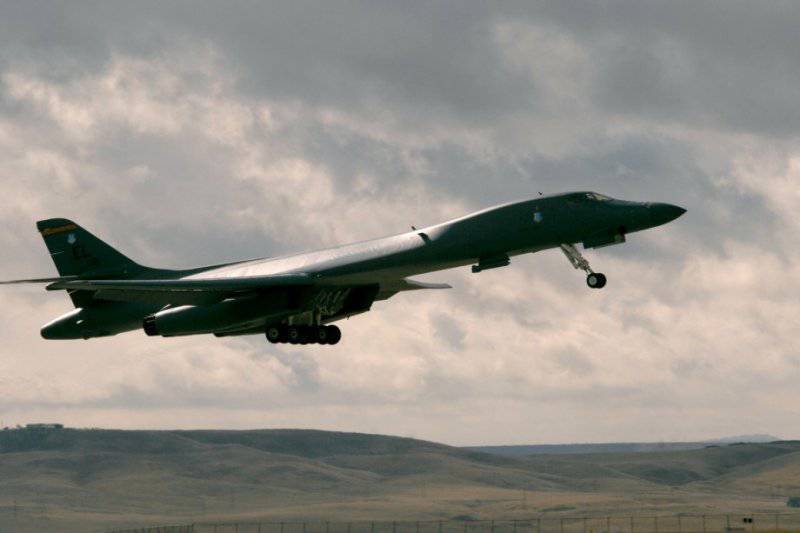
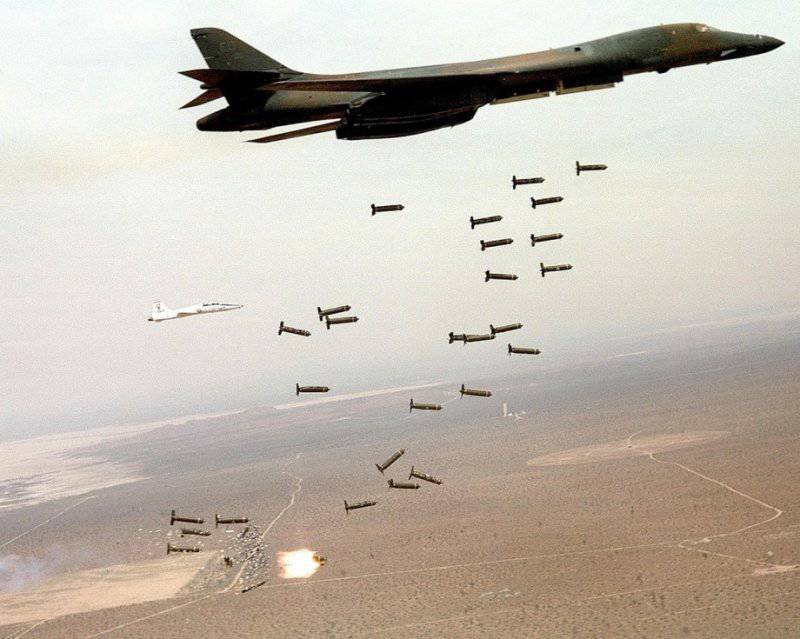
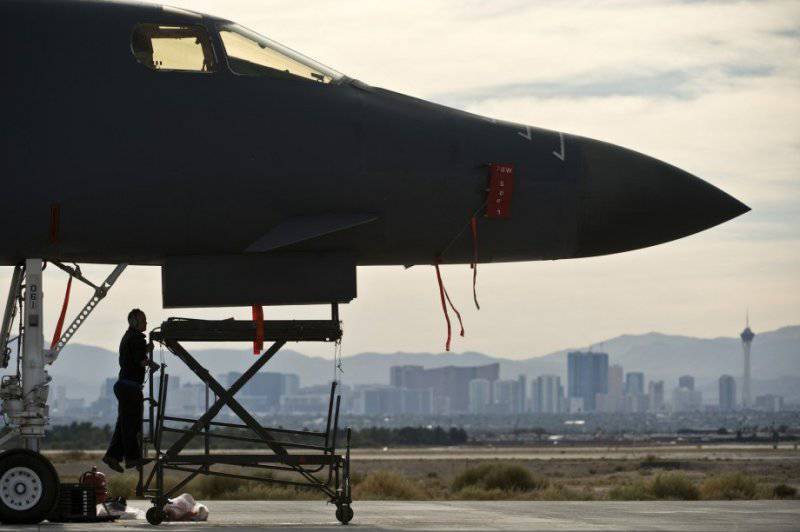
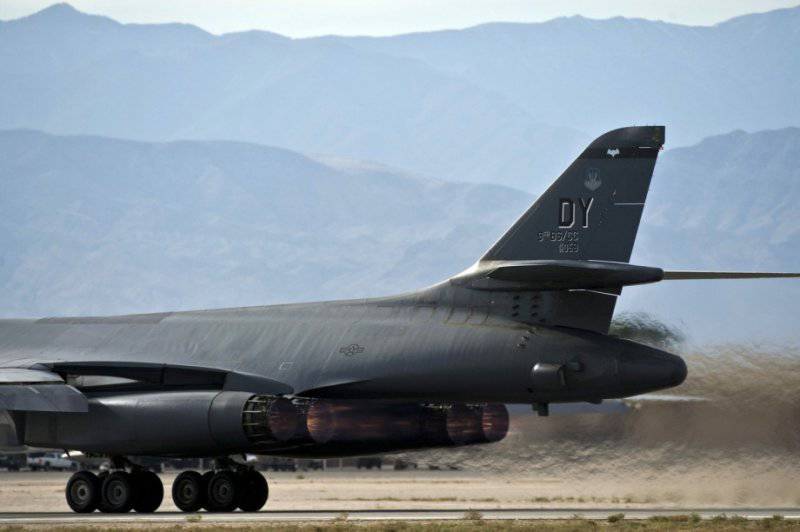
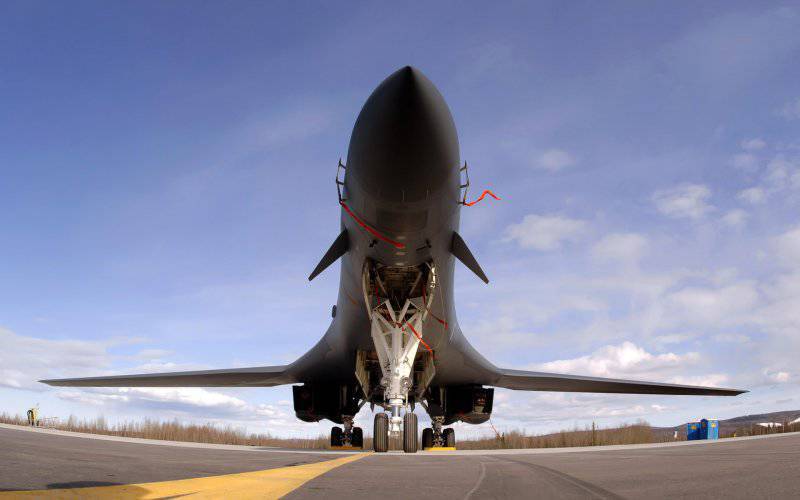
Information